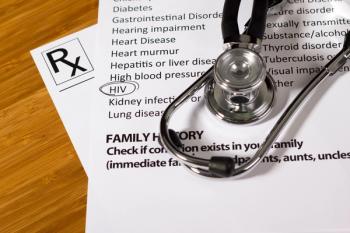Providing continuous glucose monitors (CGMs) to patients with all levels of health literacy can improve diabetes management, and the technology should therefore not be denied from people with low health literacy, according to results of a study published in the Journal of the American Pharmacists’ Association.1 Rather, health care providers should focus on improving literacy-sensitive education initiatives to ensure all patients can benefit from the devices.
Despite offering deeper insights than standard glucose monitors and emerging as a powerful diabetes management tool, CGMs require some initial learning about technology and data interpretation for effective use. Users must know how to sync and calibrate their CGM with apps on smartphones or tablets and maintain high levels of health literacy and numeracy to interpret their own data. A lack of this knowledge and literacy can contribute to challenges in effective CGM use and diabetes management.
Key Takeaways
- Despite requiring some technical and health knowledge, CGMs are valuable for patients with all levels of health literacy. Health care providers should focus on delivering clear and targeted education to ensure all patients can derive the full benefits of these tools.
- The study found a link between patients' comfort level with CGMs and their diabetes management, suggesting that providing proper training on interpreting CGM data and using the technology effectively can improve health outcomes.
- The study highlights a gap in educational materials designed for patients with lower health literacy. There's a need for health care providers to develop and use CGM training programs that are easy to understand and address specific knowledge deficits.
In conducting their study, investigators aimed to characterize health literacy levels of patients using a CGM for diabetes management, identify knowledge gaps associated with CGM education, and assess indicators of self-rated comfort with using a CGM.
In total, 82 participants with either type 1 diabetes or type 2 diabetes (T2D) who used CGMs were recruited for the study. Each participant completed the Health Literacy/Subjective Numeracy Scale (HLS/SNS) survey, a tool to assess health literacy and health numeracy in patients with T2D. Participants ranked items on the HLS and SNS surveys on 4- and 6-point scales, respectively, and investigators calculated the composite score. Higher scores—which ranged from 22-104—indicated higher levels of health literacy.
Participants also completed an investigator-developed CGM questionnaire to rate degrees of satisfaction, comfort, confidence, and perceived benefit associated with CGM monitoring. In addition, investigators assessed participants’ individual CGM data and hemoglobin A1c (HbA1c) levels to assess how patients’ answers to the 3 questionnaires aligned with clinical outcomes.
Overall, the average composite score for study participants was 80 (IQR 71-89), which indicated that participants had high levels of health literacy. Although assessment of CGM data and HbA1c results revealed that participants generally managed their diabetes well, investigators noticed that clinical outcomes were better for participants who reported feeling comfortable using their CGM and had a better understanding of data interpretation.
Despite the high average score of the patient population, investigators noticed a demographic trend: Participants who scored lower on the HLS/SNS surveys had less than a college diploma, less than $50,000 yearly household income, and had public insurance.
READ MORE: Community Pharmacists Could Help Patients Control Diabetes Through Remote CGM Monitoring
Investigators emphasized that although some patients may not feel as comfortable using their CGM, they should not be denied the technology’s benefits. Rather, health care providers should increase targeted literacy-sensitive training and provide ongoing education to ensure equitable diabetes management. Materials like the investigators’ own survey might serve as a good jumping off point to develop these initiatives.
“Given that CGMs are a relatively new staple in diabetes management, there is a lack of standardized low-literacy education materials specifically related to their use,” wrote investigators. “Our investigator-developed survey can fill that gap by giving providers an easy way to assess patients’ perception of CGMs, allowing them to provide specific literacy-sensitive training. For example, survey responses in our study showed that, for our patient population, additional targeted training should include how to respond to alerts, how to access stored CGM data, and how to interpret these results."
CGMs empower patients with diabetes to take a more active role in managing their condition, but without proper training, many of these advantages become limited. In one qualitative study, investigators found that although patients expressed confidence in making immediate adjustments to insulin and lifestyle to address impending hypoglycemia and hyperglycemia, most participants needed the help of health care professionals to interpret more complex data and determine changes to background insulin doses and mealtime ratios.2
These findings reinforce the importance of education initiatives to encourage CGM users to derive the full benefits of the technology. An increased focus on training may also promote uptake of these devices, which is becoming especially crucial as the total number of people living with diabetes is projected to increase to 578 million globally by 2030.3
“While they may not feel as comfortable or confident using their CGM initially, patients with low health literacy should not be excluded from the potential benefits of CGMs,” concluded investigators. “This study unearths the need to respond to health inequities in the diabetes population.”
READ MORE: Continuous Glucose Monitoring Resource Center
References
1. Evans EI, Pincus KJ, Seung H, Rochester-Eyeguokan CD. Health literacy of patients using continuous glucose monitoring. Journal of the American Pharmacists Association (2024), doi: https://doi.org/10.1016/j.japh.2024.102109.
2. Lawton J, Blackburn M, Allen J, et al. Patients' and caregivers' experiences of using continuous glucose monitoring to support diabetes self-management: qualitative study. BMC Endocr Disord. 2018;18(1):12. doi:10.1186/s12902-018-0239-1
3. Saeedi P, Petersohn I, Salpea P, et al. Global and regional diabetes prevalence estimates for 2019 and projections for 2030 and 2045: Results from the International Diabetes Federation Diabetes Atlas, 9th edition. Diabetes Res Clin Pract. 2019;157:107843. doi:10.1016/j.diabres.2019.107843
















































































































